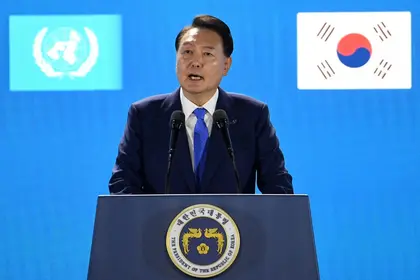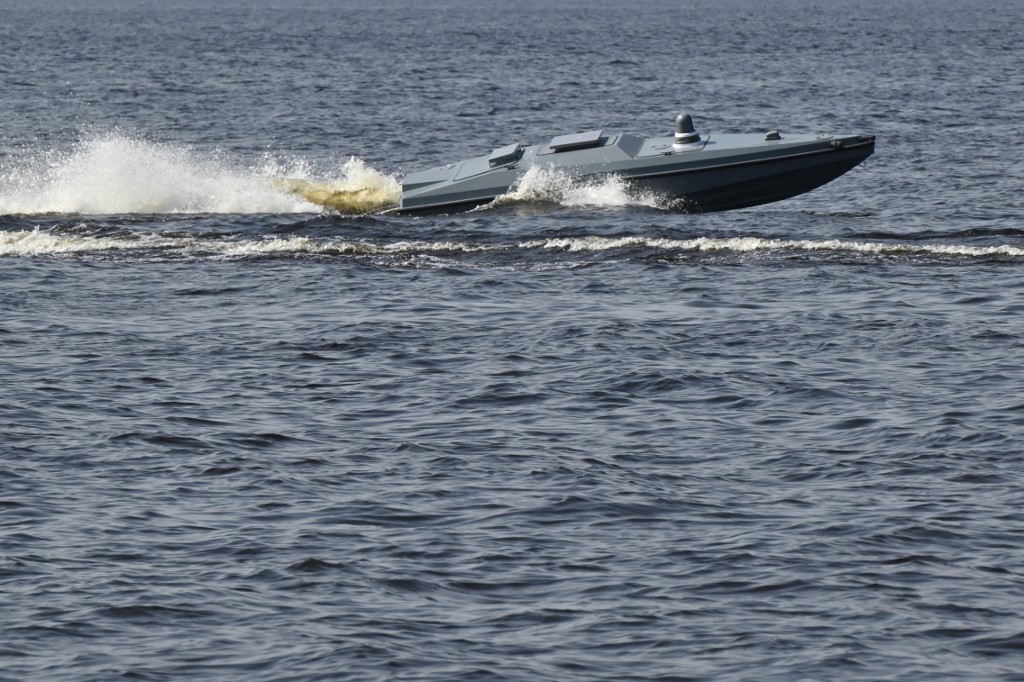At the same time as South Korea promises to increase the level of its aid to Ukraine in the coming year to $349 million, an eightfold increase on the previous year’s level it has agreed to unfreeze 6 billion US dollars of Iranian assets, which is a definite step in the wrong direction.
The release of these funds, in spite of the limitation that they can only be used for “non-sanctioned goods,” will provide financial resources to prop up the Iranian regime, stabilize the Ayatollah’s hold on the country and prevent the social uprising that has been brewing because of the dire economic state the country finds itself in.
- Access the most up-to-date war in ukraine update in the Kyiv Post’s daily news items today.
- Access the newest Ukraine news items published today.
JOIN US ON TELEGRAM
Follow our coverage of the war on the @Kyivpost_official.
The funds allocated to support Ukraine in its fight for freedom pales into insignificance compare with the damage Iran can cause with its newly regained cash through Iran’s support to Russia, its proxy terrorist networks and its continued anti-Israeli sentiment.
Prior to the 2022 Russian large-scale invasion of Ukraine, Iran actively sold oil and petrochemical products to Seoul through the “Joint Comprehensive Plan of Action (JCPOA)” – the UN brokered deal with Tehran in relation to its nuclear program. This ensured funds from sales would be deposited in South Korean accounts and be used to purchase non-sanctioned goods, to prevent the Islamic state’s funding of its satellite terror network and arms program.

Breakaway Moldovan Region Shuts Almost All Industry Amid Energy Crisis
Trade ended after President Trump pulled the plug on the JCPOA in 2018, stopping South Korea oil purchases from Iran in 2019. From that point, Iranian funds remained frozen in the East Asian state.
The decision to unfreeze the funds comes as Iranian applies pressure with threats of further developments in its nuclear program, leading to US appeasement, despite Iranian arms sales to Russia and calls to destroy Israel, and as a part of a deal that saw the release of dual US-Iranian citizens from the infamous Evin Prison in Tehran.
It is understood that the Iranian funds will be transferred out of South Korea, and converted from US dollars to Euros, in Switzerland, before transfer to 6 Iranian bank accounts in Qatar.
The decision to convert from US dollars to Euros comes after the US proscribed Iran’s Islamic Revolutionary Guard Corps, the omnipresent Iranian ideological and political police counterpart of the Nazi SS, as a foreign terrorist organization, in 2019.
The US dollar is the wrong currency for Iran’s trading ambitions as it is the most traceable currency in the world that would face the fearsome force of the FBI’s ability to enforce any nefarious dealings. While the Euro is not far behind the dollar in traceability, the lack of an equally powerful enforcement body opens up a world of possibilities for Iran to purchase items that could far exceed the intended limitations of food and medicine.
Iran’s choice of Qatar as a financial hub is also no coincidence. The alliance between the two states not only manifests in commercial agreements such as the recent uniting of their electricity grids and their work with OPEC+ on natural gas extractions, in anticipation of future easing of sanctions. Qatar is believed to provide support for Iranian terror networks, which prompted the Kingdom of Saudi Arabia to sever diplomatic ties with Qatar in 2017.
Gripped by the most severe economic crisis in its recent history, $6 billion could have a major impact on the Iranian economy - its last year’s budget deficit was claimed to be 16 billion US dollars, with more debt accumulated this year, but it seems unlikely it will be used to fund any domestic investments. The Iranian leader’s recent 4 billion dollars splash of cash in Venezuela is indicative of a regime that cares little for the plight of its people, and one that will have little interest in looking beyond its own personal or geopolitical goals.
Catherine Perez-Shakdam, Middle East analyst and a declared enemy of Iran, commented on Iran’s intentions and the repercussions of the militant state’s newfound wealth.
“Iran’s persistent efforts to find new ways of avoiding sanctions placed on it are indicative of the detrimental economic situation within the state. If the west was to adopt a strategy of a consistent and coordinated push to weaken the Iranian economy beyond recovery, there is no telling how quickly the Iranian regime will fall, but fall it will.
“Strapped for cash, the regime of the Ayatollahs is not only reaching out to unfreeze assets at a time when it absolutely needs it, but is doing so at a time when its military assistance to Russia, in an effort to kill Ukrainians, is only increasing, and is constantly elevating its aggressive stance against the state of Israel - a nation Iran has promised to wipe off the face of the planet on more than one occasion.
The current decision, effectively easing the sanctions on Iran, is nothing but a stab in the back for Ukrainians - providing funds that can, and undoubtedly will, be used to create military tech, and an active reversal of the US policy of containment of a country that wants to annihilate America's greatest ally in the middle East.”
While South Korean efforts to assist Ukraine are undoubtedly sincere, spending a miniscule 0.07% of its 2024 budget on assistance while allowing Russia’s ally and supplier to pocket 17 times more is indicative of a growing concern that totalitarian states, bargaining prisoners, human rights violations and war are outplaying the forces of democracy.
We can confidently say that Iran will use at least some of the new funds to source additional parts for drones, to be sold to Russia, while maintaining pressure on the democratic community with new bargaining chips. The Iranian regime can easily and quickly find another 5 individuals who can be thrown in prison for the next round of negotiations, leading to more appeasement. Striking a deal with the devil, the US must have been aware that it cannot come up trumps.
You can also highlight the text and press Ctrl + Enter






